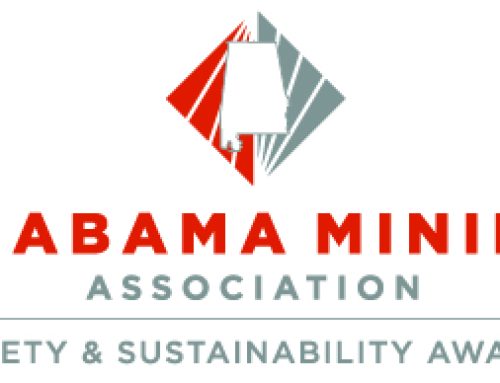The funding comes from a Bipartisan Infrastructure Law investment in the USGS Mineral Resources Program’s Earth Mapping Resources Initiative (Earth MRI), which dedicates more than $74 million for new mapping work each year to modernize our understanding of the Nation’s fundamental geologic framework and improve knowledge of domestic critical mineral resources both still in the ground and in mine waste. Overall, this act is investing $510.7 million through the USGS to advance scientific innovation and map critical minerals vital to the nation’s supply chains and economy.
The assessment will consist of an airborne electromagnetic survey in the Alabama Graphite Belt of the central and eastern part of the state. These overflights will improve the understanding of critical mineral resources within the region, including graphite, the platinum group elements, rare earth elements and a wealth of other mineral commodities.
These minerals are essential components of everything from household appliances and electronics to electric vehicles and low-carbon energy technologies like batteries, wind turbines and solar power generation. These maps and datasets are also essential in many geoscience fields, informing infrastructure projects and improving our knowledge of groundwater, energy resources and natural hazards.
“Combining airborne geophysics with geologic mapping on the ground provides useful data for many science disciplines and societal needs,” said Paul Bedrosian, one of the USGS research scientists leading the surveys. “These data provide a baseline for understanding the formation and distribution of mineral resources in Alabama, as well as improving our knowledge of groundwater, geothermal resources and earthquake hazards.”
“This project will provide us with important information through geologic mapping and geophysical data collection to enhance our understanding of critical minerals and other resources in Alabama and the southeastern region of the U.S.,” said Nick Tew, Alabama’s State Geologist and Director of the Geological Survey of Alabama. “The detailed geologic mapping being conducted as part of this project allows us to understand the rocks exposed at the Earth’s surface and the airborne geophysical surveys provide essential subsurface data. We have a long history of partnerships with the USGS, and this is a great example of leveraging federal and state resources to address important societal needs.”
The Geological Survey of Alabama will carry out additional geologic mapping for critical mineral commodities, most notably graphite, within the surveyed areas. The geologic mapping efforts, which are managed through the USGS National Cooperative Geologic Mapping Program, will refine our understanding of the geology underlying areas of interest. In addition, data-preservation efforts managed through the USGS National Geological and Geophysical Data Preservation Program will help make historical critical-minerals information electronically available to the public.
The critical mineral commodities that are included in the research projects in Alabama include:
- Aluminum: used in almost all sectors of the economy
- Arsenic: used in lumber preservatives, pesticides and semi-conductors
- Antimony: used in lead-acid batteries and flame retardants
- Barite: used in hydrocarbon production
- Beryllium: used as an alloying agent in aerospace and defense industries
- Bismuth: used in medical and atomic research
- Cobalt: used in rechargeable batteries and superalloys
- Fluorspar: used in the manufacture of aluminum, cement, steel, gasoline and fluorine chemicals
- Gallium: used for integrated circuits and optical devices like LEDs
- Germanium: used for fiber optics and night vision applications
- Graphite: used for lubricants, batteries and fuel cells
- Indium: mostly used in LCD screens
- Platinum group metals: used for catalytic agents
- Rare earth elements: primarily used in magnets and catalysts
- Tantalum: used in electronic components, mostly capacitors
- Tellurium: used in steelmaking and solar cells
- Tin: used as protective coatings and alloys for steel
- Tungsten: primarily used to make wear-resistant metals
- Vanadium: primarily used as alloying agent for iron and steel
Earth MRI is a partnership between the USGS and state geological surveys across America to modernize our understanding of the Nation’s fundamental geologic framework and knowledge of mineral resources. The Bipartisan Infrastructure Law has accelerated this new mapping in areas with potential for hosting critical mineral resources.
More information can be found here. To learn more about how the USGS is investing the resources from the Bipartisan Infrastructure Law, visit our website. To learn more about USGS mineral resource- and commodity information, please visit our website and follow us on Twitter.


